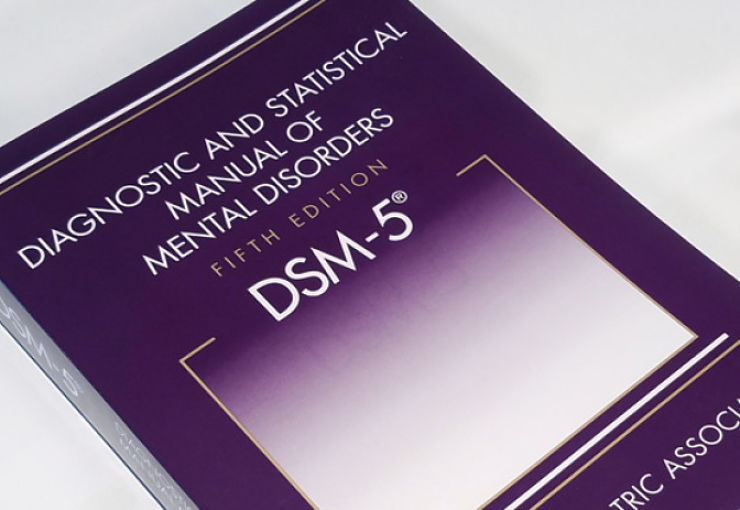Has Over-Diagnosis Eroded What’s Considered Normal?

Psychiatric classifications catalogue the many forms of mental ill-health. They define what counts as a disorder and who counts as disordered, drawing the boundary between psychological normality and abnormality.
In the past century that boundary has shifted radically. Successive classifications have added new disorders and revised old ones. Diagnoses have increased rapidly as new forms of human misery have been identified.
The wider psychiatric classifications cast their net, the more people qualify for diagnoses and the more treatment is considered necessary.
These changes may have mixed blessings. Broadening definitions of mental illness allow us to address mental health problems that were previously neglected. Mental illness may come to seem more commonplace and thereby less stigmatised.
However, inflating definitions may also lead to over-diagnosis, over-medication, and bogus epidemics. Many writers worry broad definitions of mental illness lead ordinary problems of living to be pathologised and medicalised.
But is this “diagnostic inflation” actually occurring?

Diagnostic inflation
These concerns often target the Diagnostic and Statistical Manual of Mental Disorders. The “DSM” is the American Psychiatric Association’s influential classification manual of mental health problems. Since its revolutionary third edition in 1980, each major DSM revision has been challenged over diagnostic inflation.
Some writers argue the DSM over-diagnoses depression and anxiety disorders, misrepresenting many normal responses to adversity as mental illnesses. Others suggest it has diluted what counts as a traumatic event for the purpose of diagnosing PTSD. Eyebrows have been raised by some researchers over new diagnoses such as internet addiction and mathematics disorder.
These criticisms reached fever pitch when the latest version (DSM-5) was launched in 2013. Leading the charge was distinguished American psychiatrist Allen Frances who led the task force that developed the previous edition. Frances criticized the new edition for creating “diagnostic hyperinflation” that would make mental illness ubiquitous.
For example, the latest version removed the rule that a recently bereaved person could not be diagnosed with depression. It listed new disorders representing relatively mild cognitive declines and bodily complaints. It introduced a disorder of binge eating and another for frequent temper outbursts in children.
In response to shifts such as these, Frances led a campaign to “save normality” from psychiatry’s territorial expansion.
But is it a myth?
It seems obvious the DSM has steadily inflated psychiatric diagnoses. But we decided to test this assumption in our recently published research — with surprising results.
We scoured the research for studies in which consecutive editions of the manual were used to diagnose the same group of people on a single occasion. These were 1980’s DSM-III, 1987’s DSM-III-R, 1994’s DSM-IV, and 2013’s DSM-5. For instance, a study might use DSM-III and DSM-III-R criteria to diagnose schizophrenia in a sample of inpatients.
We found more than 100 studies comparing rates of diagnosis of at least one mental disorder across a pair of editions. In all, 123 disorders could be compared based on 476 study findings. For each comparison, we evaluated diagnostic inflation by dividing the rate of diagnosis in the later edition by the rate in the earlier one — the “relative rate.”
For example, if 15 percent of a group of people received a certain diagnosis by DSM-5’s criteria and only 10 percent received it by DSM-IV’s, the relative rate would be 1.5. This would indicate diagnostic inflation. If the percentages were reversed, the relative rate would be 0.67, indicating deflation. A relative rate of 1.0 would show stability.
We found no consistent evidence of diagnostic inflation. Relative rates for each new edition were 1.11 (DSM-III-R), 0.95 (DSM-IV) and 1.01 (DSM-5). None of these differed reliably from 1.0 or from one another. The average relative rate overall was exactly 1.0, indicating an absence of diagnostic inflation from DSM-III to DSM-5.
Although there was no pattern of inflation across the board, we found a few specific disorders have inflated. Attention-deficit/hyperactivity disorder (ADHD) and autism both inflated significantly from DSM-III to DSM-III-R, as did several eating disorders and Generalised Anxiety Disorder from DSM-IV to DSM-5. However, a similar number of disorders significantly deflated so fewer people could be diagnosed with them, including autism from DSM-IV to DSM-5.
Normality may not need saving after all
These findings call into question the widespread view the DSM has created runaway diagnostic inflation. No consistent trend toward diagnostic expansion has occurred, nor has any DSM revision been singularly prone to bloat. Normality may not need saving after all.
Worries about growing over-diagnosis or over-medication should focus on particular disorders for which diagnostic inflation can be demonstrated, rather than seeing these as rampant and systemic.
Our findings restore some confidence that the DSM’s process of diagnostic revision does not necessarily make psychiatric diagnosis more expansive.
Also, they suggest supposed epidemics of depression, anxiety, ADHD or autism must be evaluated sceptically. If steep increases in diagnoses occur for disorders whose criteria have not inflated, there may be cause for alarm. If such increases occur for inflating disorders, they may simply be caused by lowered diagnostic thresholds that create a “new abnormal.”
Two kinds of diagnostic expansion
Our finding that rules for diagnosing mental disorders have not consistently become less stringent might seem to encourage complacency about diagnostic expansion. Not so fast! Diagnostic expansion can also occur through the addition of new disorders.
As we have written in relation to “concept creep,” ideas can broaden in two directions: downward to encompass milder phenomena than they did previously, and outward to encompass new kinds of phenomena.
Our study finds little evidence for the “vertical” sort of creep, but the “horizontal” sort has surely occurred. New DSM editions have always identified new ways of being mentally ill, and some of the rhetorical heat generated by DSM-5’s critics was directed at new diagnoses.
The fact that psychiatric classifications continue to evolve should not surprise us, and nor should the fact they sometimes expand. Such changes are not unique to the mental health field either. As Allen Frances has drily observed, “modern medicine is making such rapid advances, soon none of us will be well.”


























































































